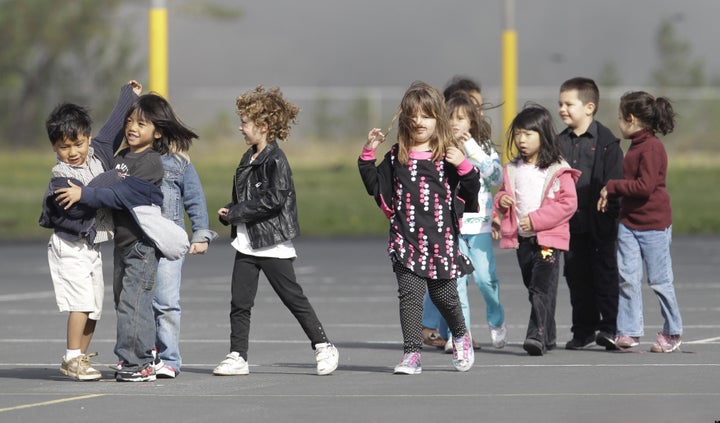
Since the income gap between middle-class and wealthy families in the United States has grown by more than 50 percent since 1985, middle-class parents are increasingly relying on government-provided health and education programs to support their children, according to a new study by the Foundation for Child Development.
The FCD report finds that even prior to the recession that began in 2007, the gap in real family income separating a middle-class family -- one with an annual income between $22,758 and $110,000 -- from a high-income one expanded from $59,800 in 1985 to $93,100 by 2008. Between 2000 and 2008, middle-class families experienced a drop in real family income of more than $4,000, compared to a dip of just $139 for the top 20 percent of earners.
Despite a decrease in the median family income and a rise in the proportion of single-parent households and childhood obesity among middle-class families, health insurance coverage and prekindergarten enrollment have steadily risen in that demographic, suggesting that public health and education initiatives have played an increasingly important role in the welfare of middle-class children.
Donald Hernandez, senior adviser to the Foundation for Child Development and author of the report, said his findings show that middle class is clearly not what it used to be.
"It makes me ask the question, 'What is the middle class?'" he told HuffPost. "We used to think of it as having the capacity to pay for a lot of basic needs and services, and that's less and less the case from the point of view of children and the increasing need they have to depend on government programs to get basic early education and health care."
For U.S. children, things may seem dire: The nation's child poverty rate rose to 20.7 percent in 2009 from 19 percent in 2008, making it the highest of any age group. The welfare of middle-class children has also been declining over the past quarter-century in more areas than income and basic needs, according to the FCD study. The growing proportion of single-parent households and households without a securely-employed parent, as well as a decline in residential mobility, suggest that social relationships deteriorated for middle-class children between 1985 and 2008, and likely worsened during the recession.
Hernandez said he is concerned that the proposed budget cuts across federal, state and local levels will slash the safety net of middle- and working-class children at a time when they need it the most.
"Even today, one in 10 middle-class children are not covered by health insurance, and about half of young children in the middle class are not enrolled in pre-K programs," he said. "There's still a long way to go, and my fear is that big budget cuts in the coming months and year or two, or however long these economic issues continue, will really have a very negative and devastating effect on these children."
As President Barack Obama's Feb. 14 budget announcement approaches, Hernandez said he hopes Congress will keep the consider the needs of children while debating the merits of these government-funded programs against other budget priorities.
"If we don't invest in our children, and particularly the young children, the next generation will not be able to do what it needs to do to provide for itself or the Baby Boomers," Hernandez said. "We can't afford to write off those children. If budget cuts to programs that are key to these children are made at state and local levels, that generation will suffer, and so will American productivity and America's position in the world."
